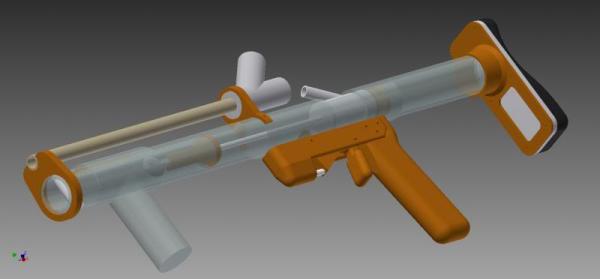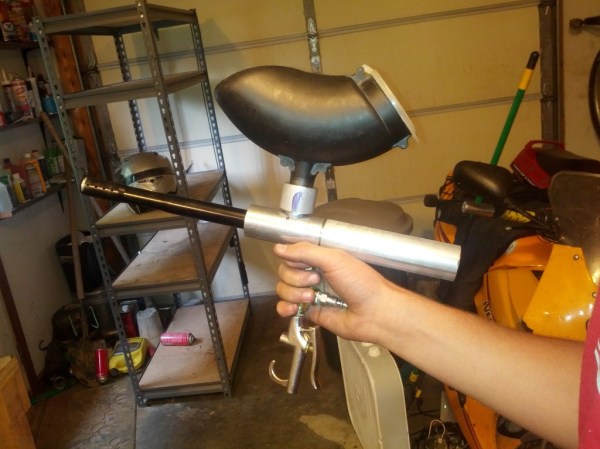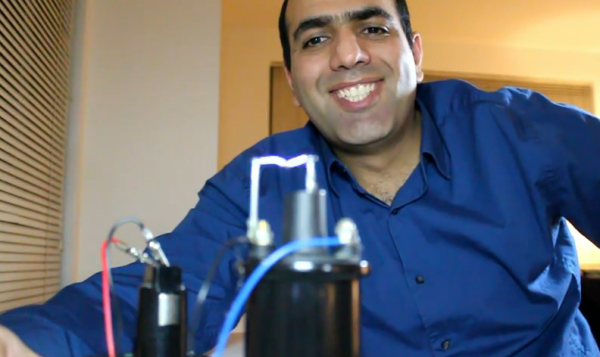The Midwest RepRap Festival isn’t just people hanging out with their 3D printers all weekend; There are also people bringing all the things they made with their 3D printers. There was an R2D2 and half of a B1 Battle Droid, a 3D printed quadcopter and of course 3D printed weaponry. [Ryan] and [Kane] from Mostly Harmless Arms brought a collection of their totally not trademark infringing not-Nerf guns.
The guys have a few designs for guns that shoot silicone-tipped extruded foam darts much further than a Nerf gun. There’s a bow, a more traditional spring-powered blaster, and a crossbow. All the designs with the exception of a few pipes and tubes and springs are 3D printed, and all the parts are small enough to fit on an 8″ bed. The darts are made with a dome mold for silicon and insulation foam that’s normally wedged in window and door frames. They’re dusted with cornstarch to prevent sticking, although in the video below there were a few jams. That’s to be expected; there was a camera around.


















